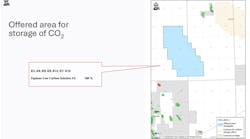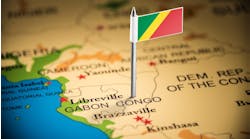In May, Marinfloc became the first comp-any worldwide to comply with new IMO rules for bilge water cleaning, MEPC 107/ 49, which come into force on Jan. 1, 2005.
Ship operators face a considerable toughening of standards, including a new requirement that approved treatment systems can demonstrably clean bilge water of emulsions as well as heavy fuel oil and diesel oil.
Marinfloc passed the test with its Mark III type CD, a fully automatic, constant flow, emulsion breaking bilge water cleaning system. Tests by the Institut Fresenius in Germany found no oil content in bilge water treated by the system.
Tackling the contents of the bilge water tank is a formidable challenge. It consists of a mix of 85% water and 15% hydraulic oils, lube oils, detergents, and other substances that combine to form emulsions.
null
The Mark III type CD is a phased treatment system. The bilge water is first heated, releasing free oil that is subsequently skimmed from the top. It then passes to a new flocculation system that works with constant flow based on flotation, with flocculants being added to break up the emulsions. The old system relied on settling tanks.
Remaining water then passes through three types of filter – one containing aqualight mineral, the oth-er two activated carbon. Once the oil content has been reduced to less than 5 parts per million (ppm), the water can be discharged.
The system will be available in sizes from 500-5,000 l/hr and with a footprint only half the size of previous systems.
Fail-safe discharge
Marinfloc has also developed the White Box System (WBS), which ensures that water with an oil content exceeding a pre-set level cannot be accidentally pumped overboard.
Water from the oily water separator is fed to the WBS, which controls a three-way discharge valve. It passes a ppm monitor, which can be set between 5 and 15 ppm. The discharge valve only opens once the monitor has determined that the oil content is below the set level.
All discharge is logged for the time pumping overboard began and ended, ppm level, total quantity of water discharged, and the ship's position and course.
When rain falls on a deck, the oil level in the resultant drain water is highest early on. The White Box system enables discharge to take place when the oil level has fallen below regulatory requirements. This will minimize the amount of drain water that needs to be collected for cleaning.
For further information contact Benny Carlson, Marinfloc. Tel +46 304 104 98, fax +46 304 100 51, [email protected], www.marinfloc.com




